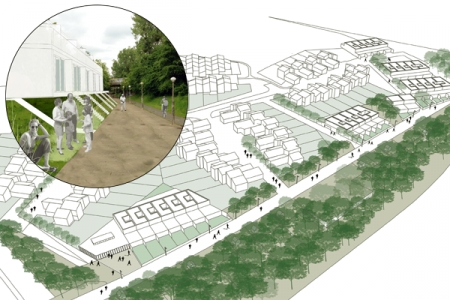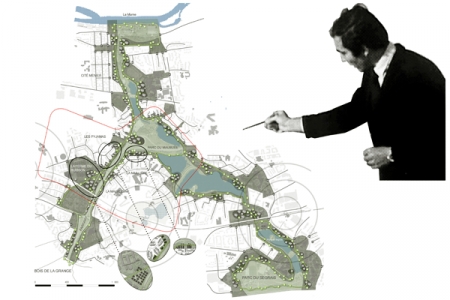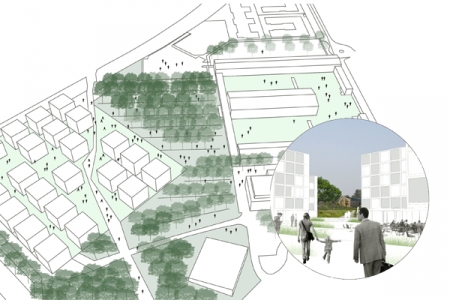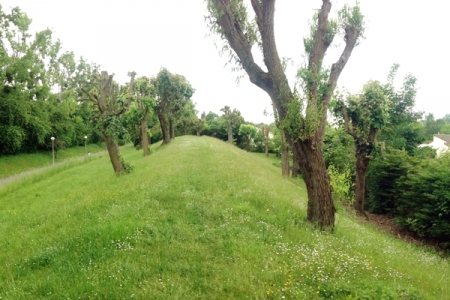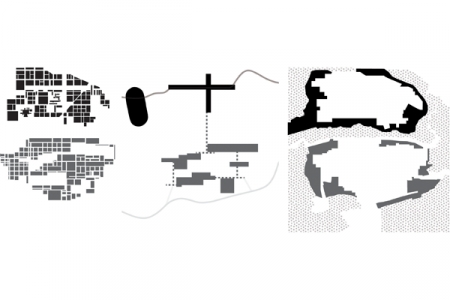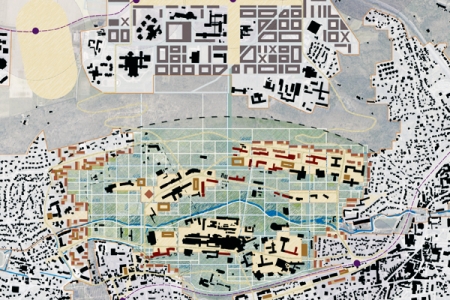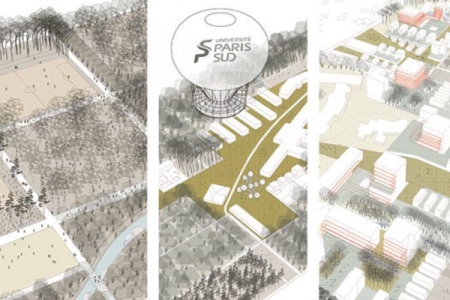Ville n(m)ature
Marne-la-Vallée – Winner
TEAM DATA
Team Representative: Yoann Dupouy (FR) – architect urban planner; Associate: Maia Tüür (EE) – architect urban planner
TU-DU Architecture Urbanisme, 95 rue de la Roquette 75011 Paris – France
contact@tu-du.fr – www.tu-du.fr
See the complete listing of portraits here
See the site page here

M. Tüür & Y. Dupouy
INTERVIEW
Click on the images to enlarge
1. How did you form the team for the competition?
We have been working together for several years and recently found a practice called TU-DU. In our office we are working on different scales of projects: urban scale, architectural scale, and a more fine scale related to micro-installations or urban furniture.
Going back and forth between the different project scales on the interface of public, built and landscaped spaces –and that we develop in parallel– is a founding resource of our projects.
2. How do you define the main issue of your project, and how did you answer on this session main topic: Adaptability through Self-Organization, Sharing and/or Project (Process)?
Our proposal on the site Marne-la-Vallée is based on the ambitious urban concepts developed at first for the new town (relation to the nature, urban ecology…). Our aim was to enhance readability and efficiency of the concepts.
One might first think that a new town, laid down on a plan, possesses little adaptability resources, as its structure appears to be frozen. In reality, the presence of several residual spaces, the mutation of different infrastructures, the evolution of population and lifestyles generate an exceptional potential for transformations.
Therefore, the work on the adaptable city starts with reflections on the resilience of the existing spaces and urban fabrics. Our project is not setting down new conditions, but is a part of a bigger process. It is more about extending than opposing the actual site logic.
3. How did this issue and the questions raised by the site mutation meet?
Several visits at the Val Maubuée revealed an important gap between the initial founding principles of the new city and their implementation in time. Despite the intention to create a nature-city, we discovered on-site that several neighbourhoods turned their backs to the exceptional surrounding open green spaces.
Given this observation, it seamed to us appropriate to extend the perimeter of the site to a larger “figure” in order to question the site on the scale of the Val Maubuée. The figure in a territorial scale enhances continuity and uses of the “green-way”, a soft connection along the major landscaped spaces of the sector.
The “figure” is not a Masterplan; it is more like a potential of a project. It gives several themes to every micro intervention on the interface of urban and green spaces.
4. Have you treated this issue previously? What were the reference projects that inspired yours?
The reflection on the “figure” of a project was also a main issue of our project “Reversing the grid” for last Europan on the site Paris-Saclay (FR). In the large scale of the valley (200ha), we projected a mirror figure of the ongoing urban project on the plateau. This work in the territorial scale gave us a possibility to enhance the readability of different connections, continuities, interfaces, etc.
This “figure” also allowed us setting a frame and defining straight logics for the projects, opening a way to local interventions. There is an obvious link with our project in Marne la Vallée.
The 3 pictures hereunder are taken from the winning project on Paris-Saclay (FR), E12, "Reversing the Grid"
5. Today –at the era of economic crisis and sustainability– the urban-architectural project should reconsider its production method in time; how did you integrate this issue in your project?
The process-project is built up on several project scales. This multiple inscription gives a project a form of permanence, beyond the economical complexities and the particularities of montage.
On the site of Marne la Vallée we proposed a general direction for the interventions to come. The direction is given by the “figure” in the territorial scale, which acts as a resilience tool for the local interventions at the scale of the surrounding neighbourhoods.
6. Is it the first time you have been awarded a prize at Europan? How could this help you in your professional career?
Our project “Reversing the grid” had the chance to win Europan 12 on the site Paris-Saclay (FR). This award acted as a catalyst. We founded our practice TU-DU in a perspective to respond to a public command on the Saclay territory. Europan has given our work a good visibility and recognition. Besides, Europan offers several occasions of enlightening meetings and discussions, in particular on the European scale. The exchanges are very stimulating and hopefully open path for future collaborations.
